Further to the previous post, where someone who had been caught speeding was gaining a frightening amount of sympathy from her peers, I did a little research.
You see, young people appear singularly incapable of accepting that they are wrong, and will invoke all manner of pseudo-science (and rap or hip-hop lyrics) to prove their point. They are the modern day equivalent of the Flat Earth Society in this respect.
First of all, I found this Australian study from 1997, titled Travelling Speed and the Risk of Crash Involvement (C. N. Kloeden, A. J. McLean, and G Ponte). It makes very interesting reading – particularly the findings represented by this graph:
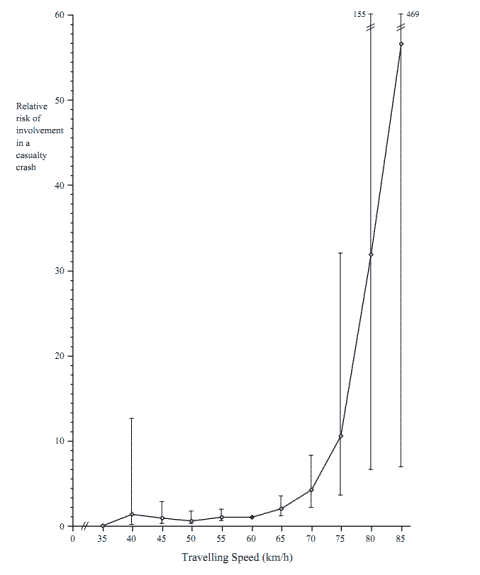
What the researchers did was investigate the details associated with a number of crashes, and calculate the relative risk of an injury-accident for various speeds above 60km/h (which is around 40mph). They set the relative risk to 1.0 at exactly 60km/h.
The clear conclusion they drew was that for every 5km/h above 60km/h, the relative risk of an accident involving injury doubled. So at 60km/h it was 1.0, at 65km/h it rose to ~2, at 70km/h it was ~4, and so on. At 85km/h (approximately 55mph) – the upper limit of their study – the relative risk had risen to almost 60.
As the researchers point out, the risk of being involved in a casualty crash is quite low – this graph is relative risk. But the findings are quite clear. They conclude:
Above 60 km/h there is an exponential increase in risk of involvement in a casualty crash with increasing travelling speed such that the risk approximately doubles with each 5km/h increase in travelling speed.
Next, there is a 2005 American report, titled Research Links Speed Increases With Increased Accidents and Accident Severity, Though Lower Speed Increases Only Effect Crashes Marginally (Virginia Department of Transportation). It’s more a collation and summary of the abstracts of numerous data sources than an actual study.
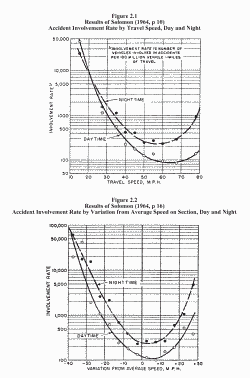
Like the Australian paper, it makes reference to data from 1964, by Solomon. The original graphs are shown on the left, but you can see them in greater detail in the Australian paper.
The top one shows the involvement rate in accidents versus travelling speed – and there is one curve for daytime accidents, and one for nighttime. It is clear that the rate is lowest between 50 and 70mph. It rises exponentially either side of this.
The lower graph shows the involvement rate in accidents versus deviation for the mean speed of the traffic all around (again, one curve for daytime, one for nighttime). The involvement rate is lowest for cars travelling close to the mean speed – in other words, the same speed as everyone else. The greater the deviation, then the greater the involvement rate.
The lower graph explains the upper one. Basically, since most people will be travelling at somewhere around the speed limit, it is those who are deviating grossly – by either driving too fast or too slow – who appear most at risk. It doesn’t matter who is right and who is wrong as far as travelling speed is concerned, because this is just accident involvement, not accident responsibility.
Another American study from 1998, titled Synthesis of Safety Research Related to Speed and Speed Management (Anacapa Sciences, Inc.), includes this comment:
The relationship between vehicle speed and crash severity is unequivocal and based on the laws of physics. The kinetic energy of a moving vehicle is a function of its mass and velocity squared. Kinetic energy is dissipated in a collision by friction, heat, and the deformation of mass. Generally, the more kinetic energy to be dissipated in a collision, the greater the potential for injury to vehicle occupants. Because kinetic energy is determined by the square of the vehicle’s speed, rather than by speed alone, the probability of injury, and the severity of injuries that occur in a crash, increase exponentially with vehicle speed. For example, a 30–percent increase in speed (e.g., from 50 to 65 mi/h [80 to 105 km/h]) results in a 69–percent increase in the kinetic energy of a vehicle.
This is precisely what I have been saying. That the faster you are going, the more serious will be the consequences if you have an accident. And the report adds this:
Solomon [from 1964, again] concluded that crash severity increased rapidly at speeds in excess of 60 mi/h (96 km/h), and the probability of fatal injuries increased sharply above 70 mi/h (112 km/h).
So on the one hand, it would appear that the current UK upper limit of 70mph IS the best in terms of convenience and safety. However, the report also mentions the effects of raising and lowering speed limits around the world in the last 20 years or so. The researchers found the following:
- relatively small reductions in upper speed limits led to a reduction in fatalities by up to a quarter
- relatively small increases in upper speed limits led to an increase in fatalities by up to a a third
It should be pointed out that some changes appeared to have no significant effect on accidents and fatalities (read the report yourselves), but the majority did. It was clear that increasing speed limits led to anything from a negligible to a dramatic increase in accidents and fatalities (with the exception of one US situation).
Finding this information is easy – and there is much more or it out there. However, what is also clear from reading it is that there is no single factor which governs safety, accidents, or anything else. You can’t just push a button or flip a switch and have everything all nice and comfy – something the DSA needs to take note of the next time it tries to make a silly blanket decisions about ADIs having to sit in on driving tests, and argue that this will reduce fatalities somehow.
I also refer back to an earlier quote, which points out that a 30% increase in speed from 50 to 65mph leads to a 69% increase in the kinetic energy of the vehicle! So just going 15mph faster could potentially lead to you having an accident which is And yet the IAM would have you dangerously believe that speeding is “relatively unimportant” in how accidents occur, whereas our Mickey Mouse government wants to cheaply win votes by increasing our upper motorway speed limit from 70mph to 80mph.
Is it any wonder young people (mentioned in Part I of this topic) have stupid ideas about speeding?
The simple fact is that the faster you go, the less time you have to react – and as a new driver, you already have far less time than you think. You are not perfect, and you most certainly aren’t immortal. The result of this is that any accident you have will be worse – much worse – than if you’d have gone slower.
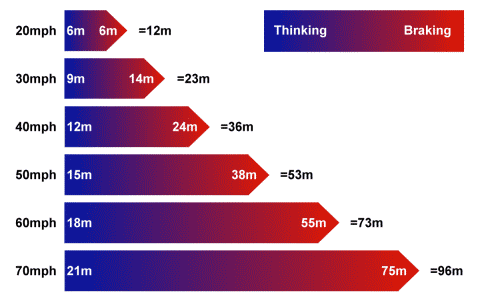



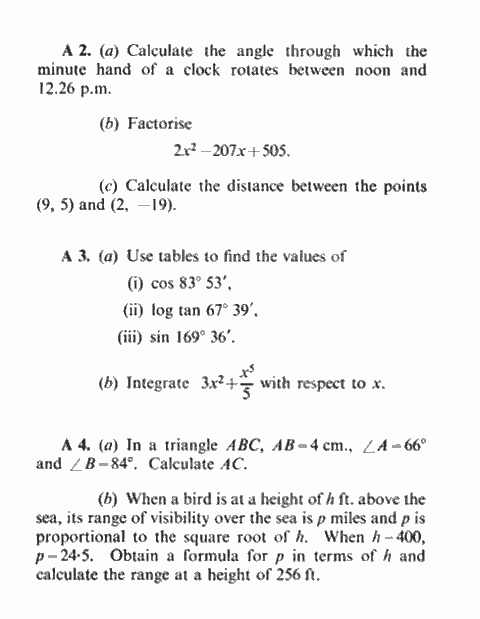

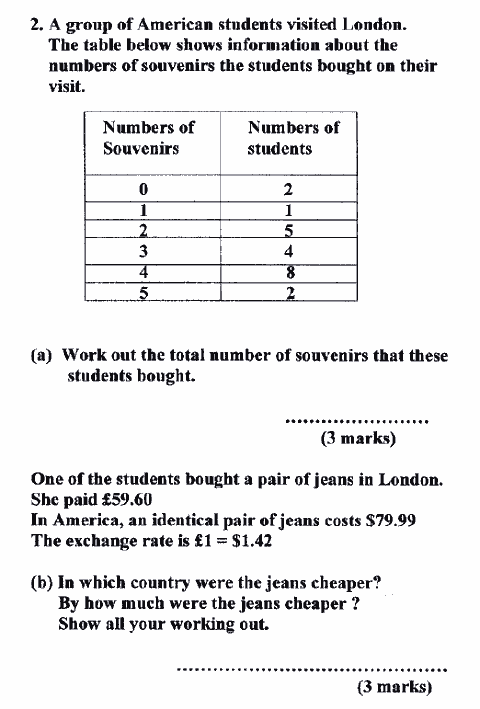 You do not need to know any maths at all to answer question 1. The answer is in the question, and you get 2 marks for that! Question 2 is the simplest of arithmetical puzzles, and you gte 6 marks for it. There is simply no comparison. Modern exams are easy – almost Pub Quiz level – in comparison with those from the past. This explains why Universities are overflowing with applications.
You do not need to know any maths at all to answer question 1. The answer is in the question, and you get 2 marks for that! Question 2 is the simplest of arithmetical puzzles, and you gte 6 marks for it. There is simply no comparison. Modern exams are easy – almost Pub Quiz level – in comparison with those from the past. This explains why Universities are overflowing with applications.
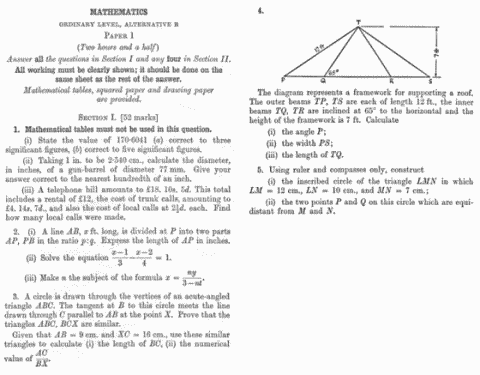


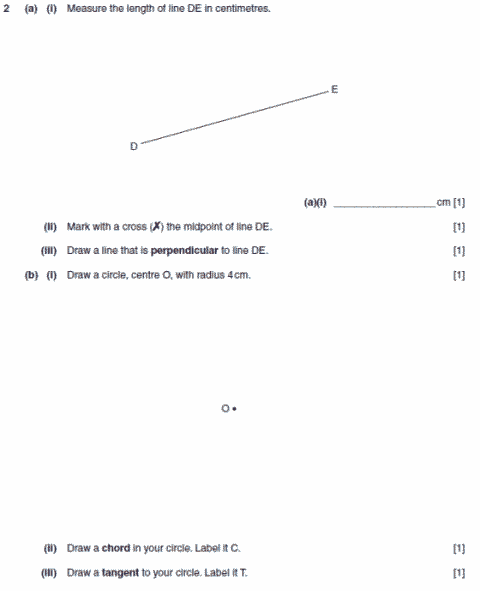
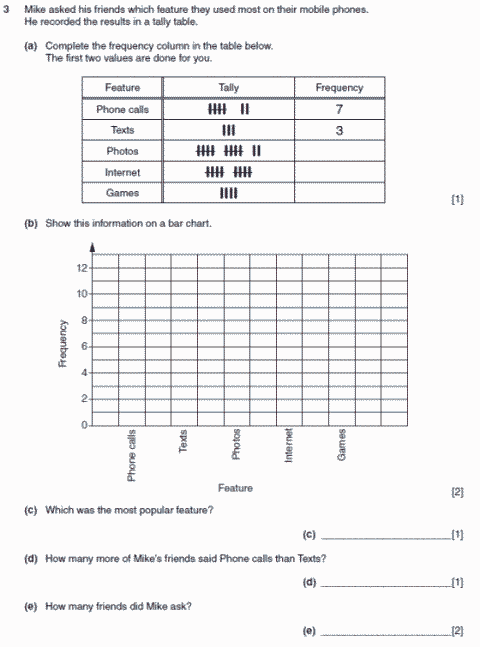
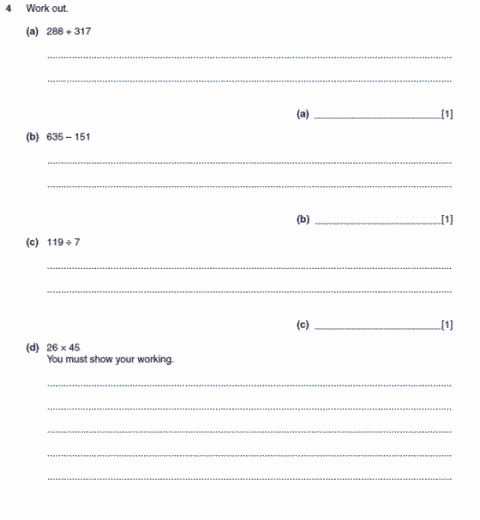
 Erm. I hate to break it to you, Richard, but one of the main aims of learning is to identify when things aren’t good enough so you can improve. Children are not able to determine what is good enough in this context, and that’s why we have teachers. Well, it used to be. It seems that teachers these days are allowed – nay! forced – to do everything except teach. It isn’t hard to imgine the meetings, brainstorming sessions, and other wastes of taxpayers’ money that led to this earth-shattering decision.
Erm. I hate to break it to you, Richard, but one of the main aims of learning is to identify when things aren’t good enough so you can improve. Children are not able to determine what is good enough in this context, and that’s why we have teachers. Well, it used to be. It seems that teachers these days are allowed – nay! forced – to do everything except teach. It isn’t hard to imgine the meetings, brainstorming sessions, and other wastes of taxpayers’ money that led to this earth-shattering decision.